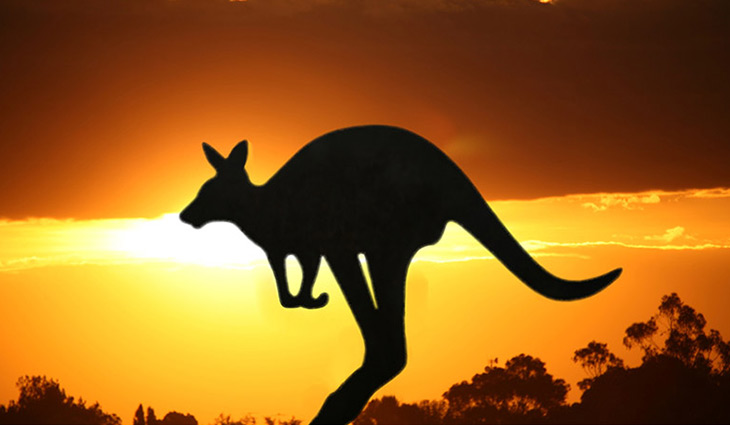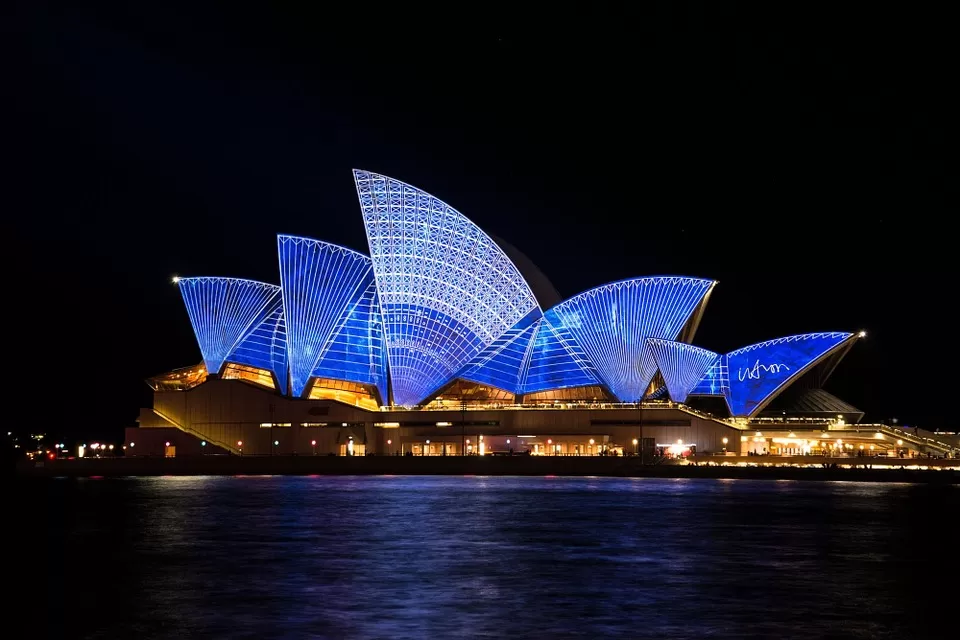Introduction to Australia
Australia is a land of wonder, boasting breathtaking landscapes and diverse cultures. It’s more than just the Great Barrier Reef or kangaroos hopping through the bush; it’s a treasure trove of surprises waiting to be explored. You may think you know Australia well, but there are countless fascinating facts that remain under the radar. From its ancient history to unique wildlife and vibrant traditions, this continent offers an array of intriguing stories. Buckle up as we dive into ten captivating aspects of Australia that will leave you amazed!
The History of Australia
Australia’s history is a tapestry woven from diverse threads. Indigenous Australians, the continent’s first inhabitants, have lived here for over 65,000 years. Their rich cultures and traditions reflect deep connections to the land.
European exploration began in the 17th century with figures like Willem Janszoon and Abel Tasman. These early encounters laid the groundwork for future colonization.
In 1788, Captain Arthur Phillip established a penal colony at Botany Bay. This marked the beginning of British settlement and fundamentally altered Australia’s landscape and society.
Over time, gold rushes in the mid-19th century attracted waves of immigrants seeking fortune. Cities flourished as communities expanded rapidly during this period of growth.
World War I and World War II left profound impacts on national identity, shaping Australia into a more unified nation amidst global challenges. The journey continues as Australia evolves while honoring its past.

Unique Wildlife in Australia
Australia is renowned for its unique wildlife, which boasts an impressive array of species found nowhere else on Earth. Think kangaroos and koalas—these iconic marsupials are symbols of the country’s rich biodiversity.
But it doesn’t stop there. Australia is home to over 800 species of mammals, birds, reptiles, and amphibians that have adapted to diverse habitats. The platypus stands out with its unusual combination of features; this egg-laying mammal has a bill like a duck and webbed feet.
The Great Barrier Reef offers another glimpse into Australia’s distinct ecosystem. Colorful coral reefs teem with marine life such as clownfish and sea turtles.
In the bushland, you’ll find fascinating creatures like the emu or the echidna. Each plays a vital role in maintaining ecological balance while captivating nature enthusiasts around the globe. Discovering these animals adds depth to any Australian adventure!
Indigenous Culture and Traditions
Australia’s Indigenous culture is one of the oldest living cultures in the world, dating back over 65,000 years. This rich heritage encompasses diverse languages, art forms, and spiritual beliefs unique to various Aboriginal and Torres Strait Islander groups.
Storytelling plays a vital role in preserving traditions. Oral histories passed down through generations encapsulate knowledge about land management, spirituality, and identity. Dreamtime stories offer insight into creation myths that connect people to their ancestors and nature.
Art is another significant aspect of Indigenous culture. Traditional dot paintings and bark paintings reflect personal experiences as well as broader cultural narratives. These pieces are not merely decorative; they carry deep meanings tied to clan identities.
Ceremonies remain crucial in contemporary Indigenous life too. They celebrate important milestones such as births or initiations while reinforcing community bonds through song, dance, and ritual practices rooted in ancient customs.
Interesting Facts about the Land and Geography
Australia is home to the world’s largest coral reef system, the Great Barrier Reef. Stretching over 2,300 kilometers, it boasts stunning marine diversity.
The country also features vast deserts like the Simpson and Great Victoria. These arid landscapes cover more than 70% of Australia’s land area. Surprisingly, this dry terrain hosts unique flora adapted to survive harsh conditions.
Mount Kosciuszko stands as Australia’s highest peak at 2,228 meters. It offers breathtaking views and attracts hikers from around the globe.
Another fascinating aspect is Uluru (Ayers Rock), a sacred site for Indigenous Australians. This massive sandstone monolith changes color with the setting sun—an awe-inspiring sight not to be missed.
With diverse ecosystems ranging from rainforests in Queensland to snowy mountains in Tasmania, Australia’s geography truly captivates adventurers and nature lovers alike. Each region has its own charm waiting to be explored.
Famous Australian Inventions and Discoveries
Australia is a land of innovation, producing inventions that have changed the world. One notable invention is the black box flight recorder. This essential device has revolutionized air travel safety by recording critical flight data.
Another groundbreaking creation is Wi-Fi technology. Developed from a research project at the Commonwealth Scientific and Industrial Research Organisation (CSIRO), it transformed how we connect globally.
The bionic ear also hails from Australia, enhancing hearing for countless individuals with hearing impairments. This remarkable advancement has opened up new worlds for many.
Beyond tech, Australians gave us Vegemite—a beloved spread made from yeast extract. It’s an acquired taste but remains iconic in Australian cuisine.
Don’t forget about the surfboard! Pioneered by early surfers on Australian beaches, it represents both leisure and lifestyle in this sun-soaked nation. Each of these innovations reflects Australia’s creative spirit and influence on daily life worldwide.
Popular Tourist Destinations in Australia
Australia boasts a plethora of breathtaking tourist destinations. The Great Barrier Reef is undoubtedly one of the most famous. This UNESCO World Heritage site attracts divers and snorkelers from around the globe.
Sydney offers iconic landmarks like the Sydney Opera House and Harbour Bridge. Strolling through its vibrant neighborhoods reveals stunning beaches, including Bondi and Manly.
Melbourne stands out for its artsy vibe, with street art adorning laneways and an impressive food scene that captivates all palates. Don’t forget to explore its hidden cafés!
For nature lovers, Uluru in the heart of the Outback presents a striking red monolith steeped in Indigenous significance.
Tasmania enchants visitors with untouched wilderness and picturesque landscapes, perfect for hiking enthusiasts seeking adventure.
Each destination showcases Australia’s diversity, leaving travelers spellbound by unique experiences waiting to be discovered at every turn.
Australian Slang Terms and Phrases
Australia is famous for its unique slang that can leave outsiders scratching their heads. Phrases like “arvo” stand in for afternoon, while “brekkie” refers to breakfast.
If someone tells you they’re “flat out,” it means they are extremely busy. And when a mate says, “I’m feeling a bit crook,” don’t worry; they just feel unwell.
A common greeting might be “G’day!” It’s an easy way to say hello. You might also hear “no worries” as a laid-back response to any situation, reassuring others everything is fine.
For the adventurous, the term “bushwalking” simply means hiking through Australia’s stunning landscapes. Keep your ears open and you’ll surely pick up more of this colorful language during your visit!

The Influence of Sports in Australian Culture
Sports are woven into the fabric of Australian life. From cricket on sunlit beaches to rugby matches in packed stadiums, athletic pursuits unite communities.
Australians celebrate sporting events with a passion that’s hard to ignore. The Melbourne Cup is not just a horse race; it’s a national holiday marked by festivities and fashion.
In schools, sports play an essential role in childhood development. Kids learn teamwork while enjoying activities like AFL or netball from an early age.
The country also boasts remarkable success on the world stage, especially in swimming and cricket. This pride fosters camaraderie among fans who rally behind their teams with fervor.
Moreover, Indigenous sports have gained recognition, showcasing traditional games that connect history with modern competition. Such diversity enriches Australia’s sporting landscape and reflects its multicultural identity.
Frequently Asked Questions
Australia is a land of wonder, and curiosity often leads to intriguing questions. Here are some frequently asked questions about this remarkable country:
What is the capital city of Australia?
Many people mistakenly think Sydney or Melbourne holds this title. The actual capital is Canberra, located in the Australian Capital Territory (ACT). This planned city was established as a compromise between rival cities.
Is Australia home to dangerous animals?
Yes, it’s true! Australia has its fair share of unique creatures that can be hazardous. From box jellyfish to saltwater crocodiles, it’s wise for visitors to stay informed and heed local warnings when exploring nature.
Why do Australians celebrate Australia Day?
Held on January 26th each year, Australia Day commemorates the arrival of the First Fleet at Port Jackson in 1788. It’s a day filled with festivities but also sparks discussions on Indigenous rights and recognition.
What languages are spoken in Australia?
While English is the primary language spoken across the nation, there are over 250 languages represented within Aboriginal communities alone. This reflects Australia’s rich cultural diversity.
Are there any unique sports played only in Australia?
Absolutely! One notable example is Aussie Rules Football—an exciting blend of soccer and rugby that captivates fans nationwide. Another favorite sport is cricket, which has deep roots in Australian culture.
These facts merely scratch the surface of what makes Australia so fascinating. Its landscapes, cultures, wildlife—and yes—even quirky phrases all contribute to its uniqueness!













